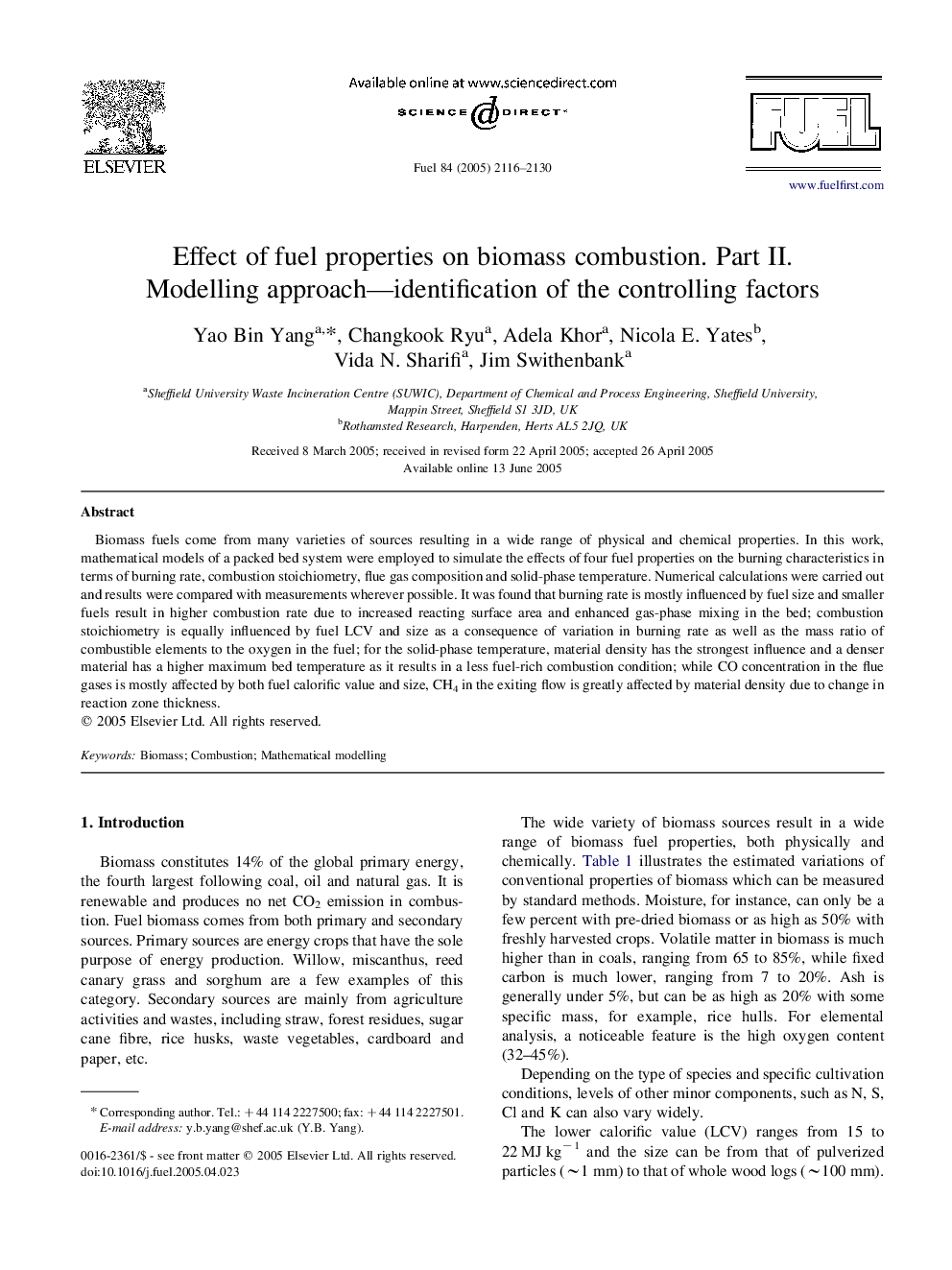| Article ID | Journal | Published Year | Pages | File Type |
|---|---|---|---|---|
| 208873 | Fuel | 2005 | 15 Pages |
Biomass fuels come from many varieties of sources resulting in a wide range of physical and chemical properties. In this work, mathematical models of a packed bed system were employed to simulate the effects of four fuel properties on the burning characteristics in terms of burning rate, combustion stoichiometry, flue gas composition and solid-phase temperature. Numerical calculations were carried out and results were compared with measurements wherever possible. It was found that burning rate is mostly influenced by fuel size and smaller fuels result in higher combustion rate due to increased reacting surface area and enhanced gas-phase mixing in the bed; combustion stoichiometry is equally influenced by fuel LCV and size as a consequence of variation in burning rate as well as the mass ratio of combustible elements to the oxygen in the fuel; for the solid-phase temperature, material density has the strongest influence and a denser material has a higher maximum bed temperature as it results in a less fuel-rich combustion condition; while CO concentration in the flue gases is mostly affected by both fuel calorific value and size, CH4 in the exiting flow is greatly affected by material density due to change in reaction zone thickness.
